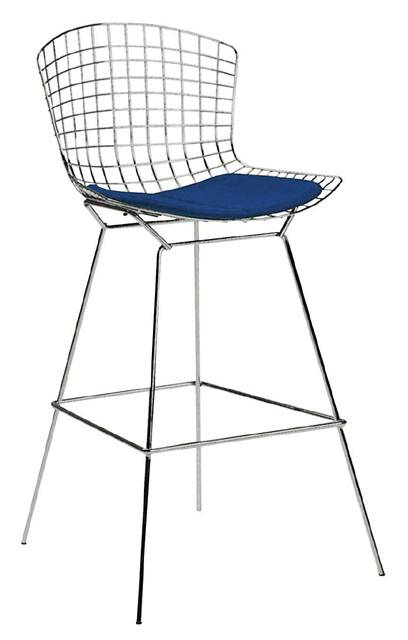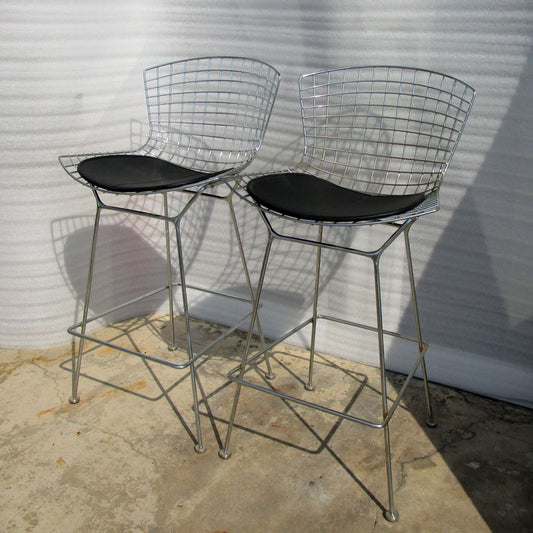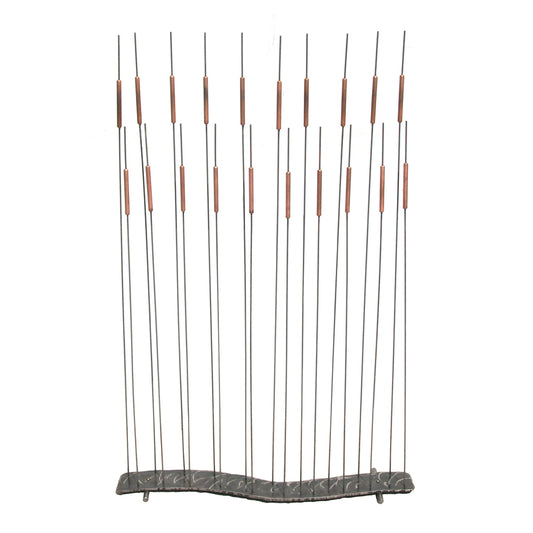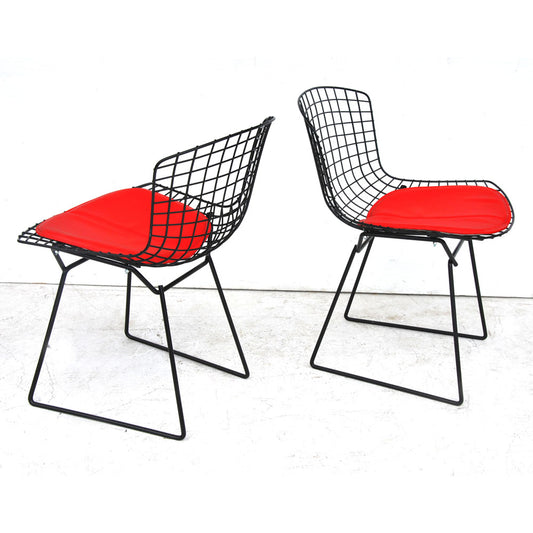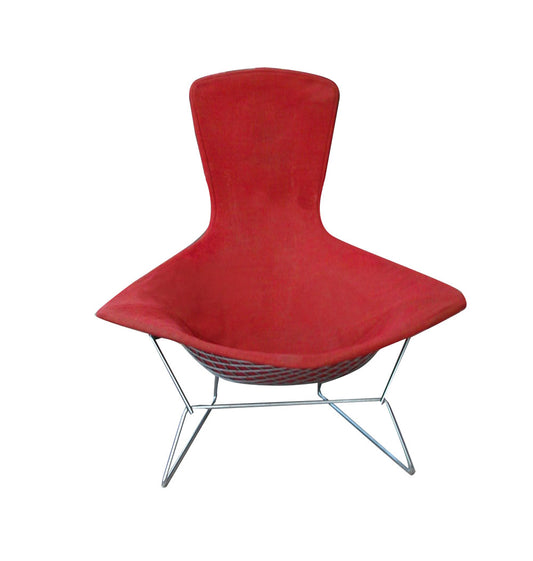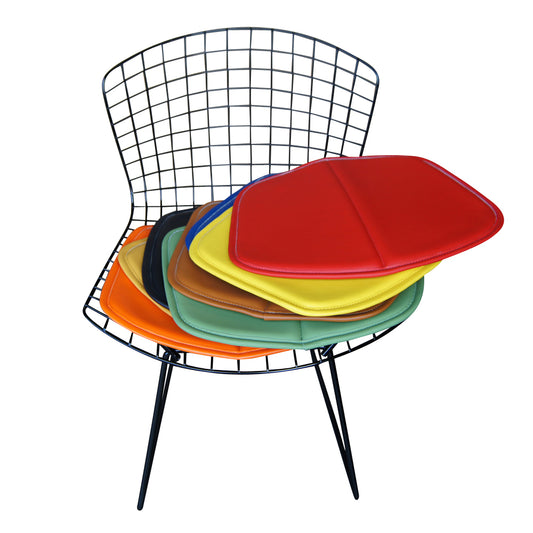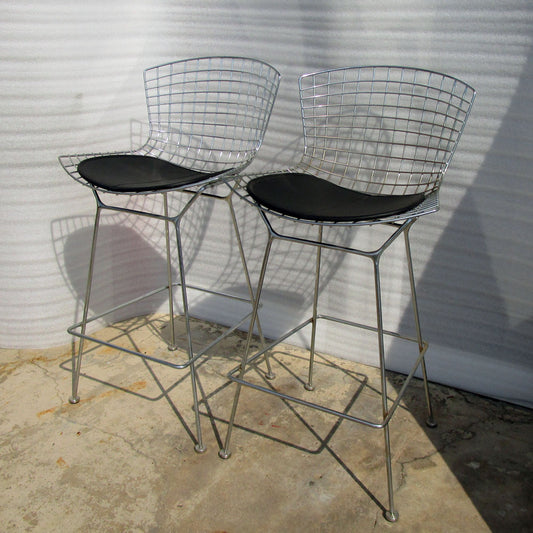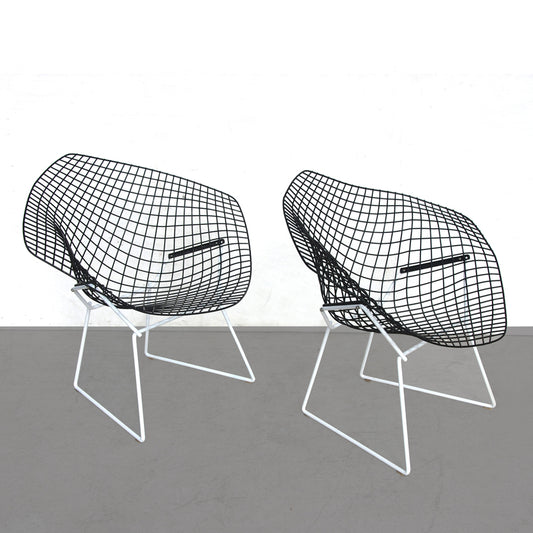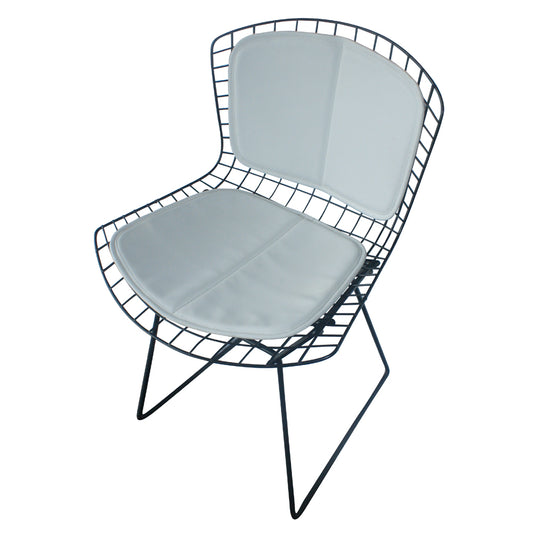Collection: Harry Bertoia
Harry Bertoia (March 10, 1915 – November 6, 1978 was an Italian-born American artist, sound art sculptor, and modern furniture designer.
Bertoia was born in San Lorenzo d'Arzene, Pordenone, Italy. At age 15, given the opportunity to move to Detroit, Harry chose to adventure to America and live with his older brother, Oreste. After learning English and the bus schedule, he enrolled in Cass Technical High School, where he studied art and design and learned the skill of handmade jewelry making ca.1930–1936. At that time, there were three jewelry and metals teachers Louise Green, Mary Davis, and Greta Pack. In 1936 he attended the Art School of the Detroit Society of Arts and Crafts, now known as the College for Creative Studies. The following year in 1937 he received a scholarship to study at the Cranbrook Academy of Art where he encountered Walter Gropius, Edmund N. Bacon, Ray and Charles Eames, and Florence Knoll for the first time.
Starting out as a painting student but soon being asked to reopen the metal workshop in 1939, Bertoia taught jewelry design and metal work. Later, as the war effort made metal a rare and very expensive commodity he began to focus his efforts on jewelry making, even designing and creating wedding rings for Ray Eames and Edmund Bacon's wife Ruth. When all the metal was taken up by war efforts, he became the graphics instructor. Still at Cranbrook, in 1943 he married Brigitta Valentiner, and then moved to California to work for Charles and Ray at the Molded Plywood Division of the Evans Product Company. Bertoia also learned welding techniques at Santa Monica College and began experimenting with sound sculptures.[4] Bertoia worked there until 1946, then sold his jewelry and monotypes until obtaining work with the Electronics Naval Lab in La Jolla. In 1950, he was invited to move to Pennsylvania to work with Hans and Florence Knoll. (Florence studied also at Cranbrook.) During this period he designed five wire pieces that became known as the Bertoia Collection for Knoll. Among these was the famous diamond chair, a fluid, sculptural form made from a welded lattice work of steel.[2]
In Bertoia's own words, "If you look at these chairs, they are mainly made of air, like sculpture. Space passes right through them."
The chairs were produced with varying degrees of upholstery over their light grid-work, and they were handmade at first because a suitable mass production process could not be found. Unfortunately, the chair edge utilized two thin wires welded on either side of the mesh seat. This design had been granted a patent to the Eames for the wire chair produced by Herman Miller. Herman Miller eventually won and Bertoia & Knoll redesigned the seat edge, using a thicker, single wire, and grinding down the edge of the seat wires at a smooth angle—the same way the chairs are still produced. Nonetheless, the commercial success enjoyed by Bertoia's diamond chair was immediate. It was only in 2005 that Bertoia's asymmetrical chaise longue was introduced at the Milan Furniture Fair and sold out immediately.
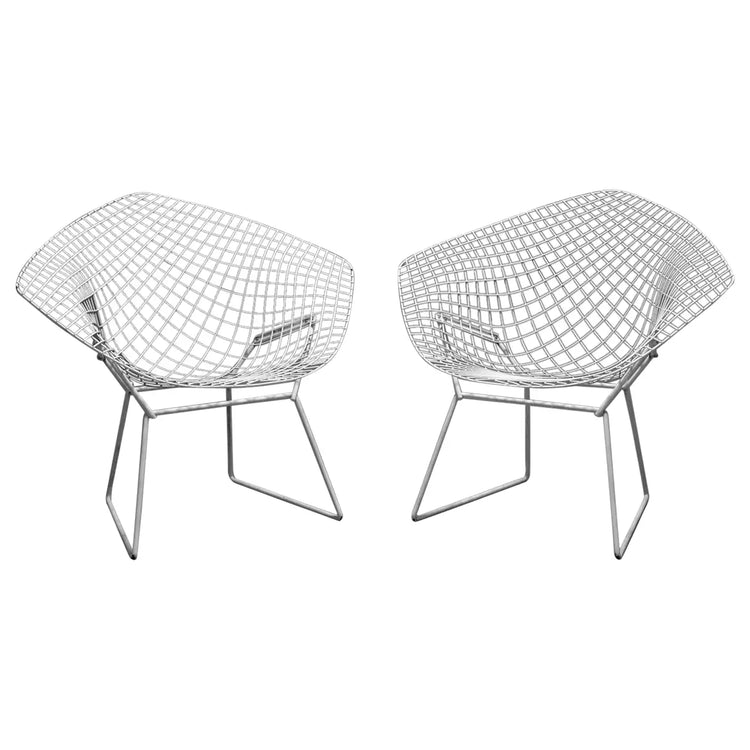
-
Vintage Bertoia counter stools for Knoll
Regular price $800.00 USDRegular priceUnit price / per -
Large Bertoia Style Sonambient Sculpture
Regular price $2,900.00 USDRegular priceUnit price / per$3,625.00 USDSale price $2,900.00 USDSold out -
Mid Century Restored Knoll Bertoia Side Chair
Regular price $800.00 USDRegular priceUnit price / per -
Pair of Vintage Black Knoll Bertoia Side Chairs
Regular price $1,495.00 USDRegular priceUnit price / per -
Vintage Black Knoll Bertoia Diamond Lounge Chair
Regular price $800.00 USDRegular priceUnit price / per -
Vintage Mid Century Knoll Bertoia Bird Lounge Chair
Regular price $2,900.00 USDRegular priceUnit price / per$3,625.00 USDSale price $2,900.00 USDSale -
Knoll Style Bertoia Side Chair Seat Cushion – Colors Available
Regular price $800.00 USDRegular priceUnit price / per -
Pair of Bertoia barstools for Knoll
Regular price $900.00 USDRegular priceUnit price / per -
Knoll Bertoia two-tone Diamond Lounge Chair
Regular price $800.00 USDRegular priceUnit price / per$1,000.00 USDSale price $800.00 USDSale -
Knoll Bertoia Modern Side Chair
Regular price $800.00 USDRegular priceUnit price / per -
Mid Century Side Chair by Bertoia for Knoll
Regular price $850.00 USDRegular priceUnit price / per

